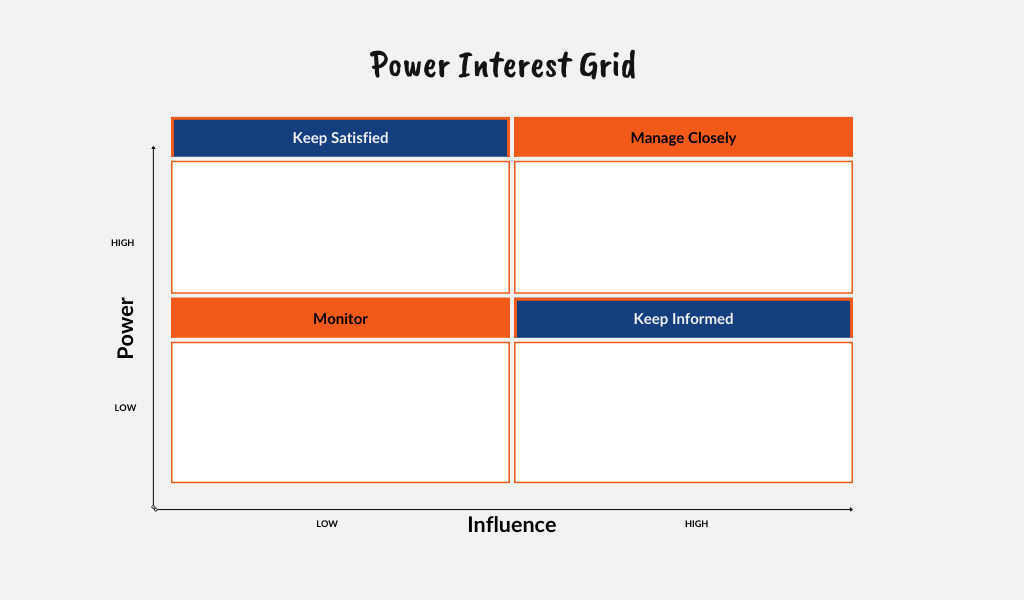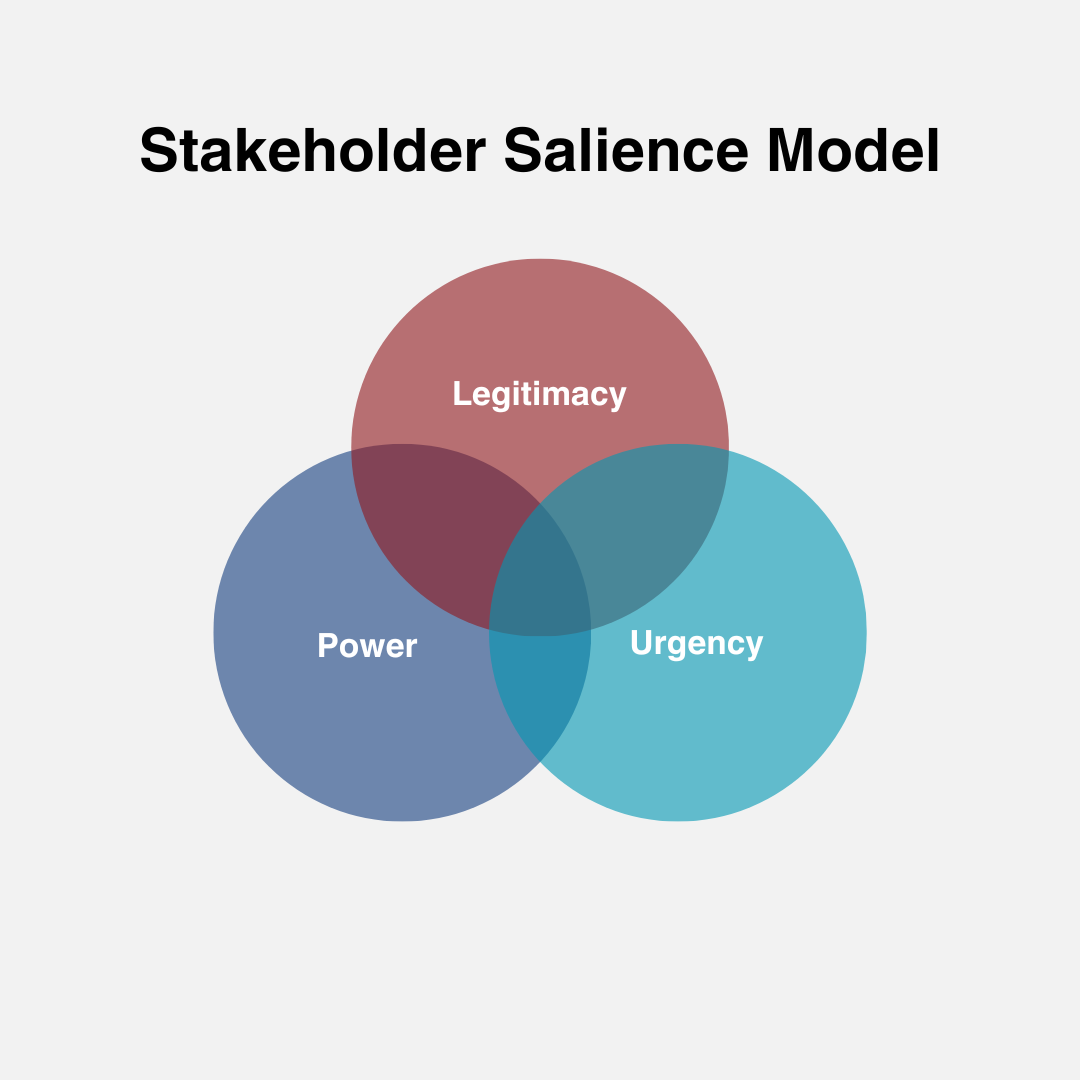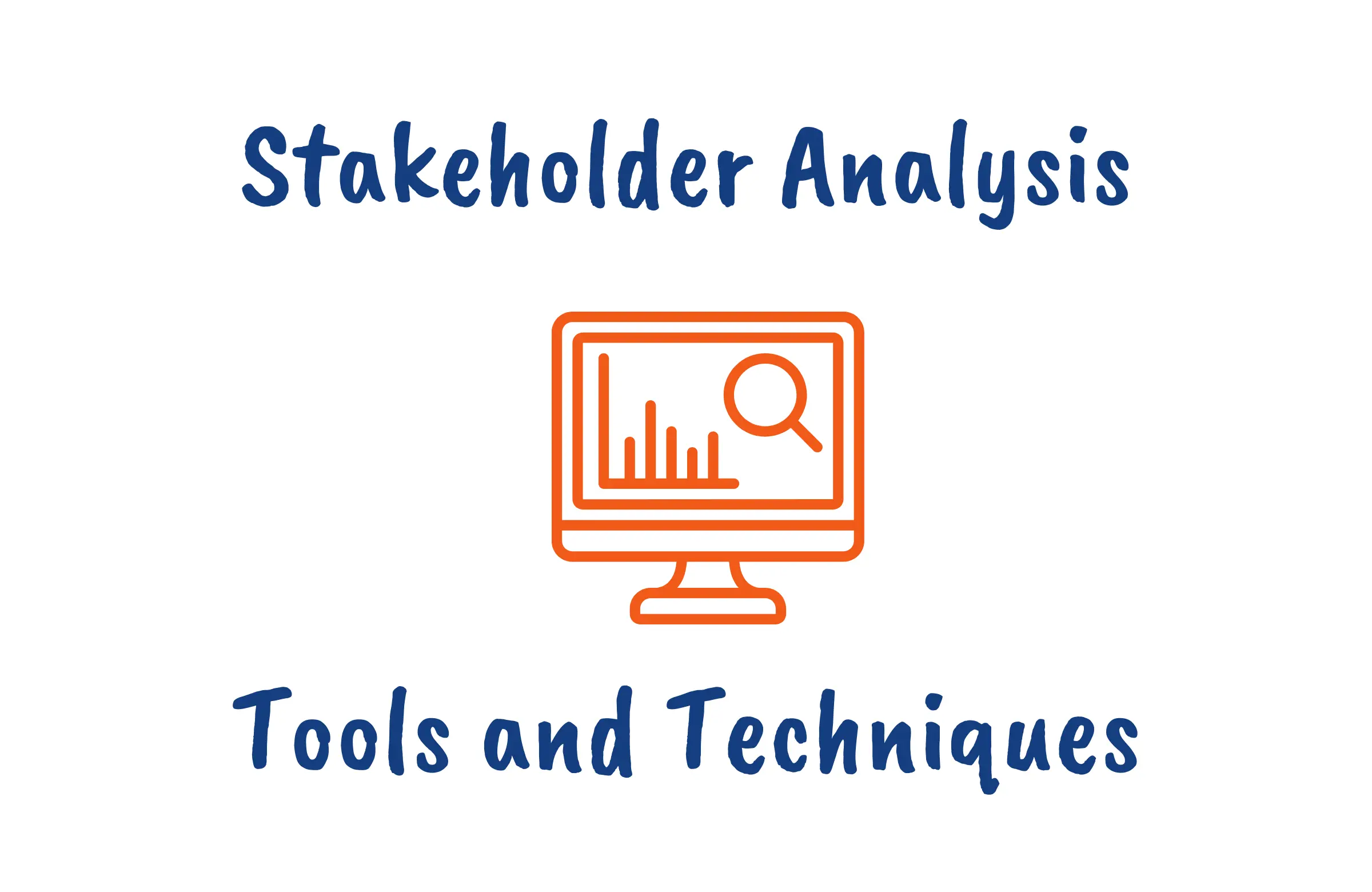It is not uncommon to see project managers and business analysts make certain mistakes when it comes to stakeholder management.
One common mistake is not identifying all stakeholders, while another is paying the wrong attention to a stakeholder.
Understanding your stakeholders is critical to the success of any project or initiative as all stakeholders on a project are not equal.
Performing a thorough stakeholder analysis helps you identify and prioritize the people and groups who have an interest in your work.
In this guide, we explore the most effective stakeholder analysis tools and techniques for identifying, categorizing, and managing project stakeholders.
We’ll also cover how to create stakeholder maps and power interest grids to visualize relationships.
What is Stakeholder Analysis in Project Management?
Stakeholder analysis in project management is a process that helps you identify and understand the people and groups who can influence your project.
By analyzing your stakeholders, you can develop targeted strategies for communication and engagement.
According to the Project Management Book of Knowledge (PMBOK) 7th Edition, Stakeholders can be individuals, groups, or organizations that may affect, be affected by, or perceive themselves to be affected by a decision, activity, or outcome of a portfolio, program, or project.

Stakeholder Mapping Techniques
The primary steps and techniques involved in stakeholder mapping and analysis are:
1. Stakeholder Identification
The first step in any stakeholder analysis is to identify all individuals and groups who have an interest in or could impact your project.
Some techniques used to identify stakeholders include:
- Brainstorming Sessions: Hold structured brainstorming sessions with cross-functional teams to develop a list of potential stakeholders.
- Surveys and Interviews: These help uncover stakeholders you may have missed.
- Stakeholder Identification Templates: These provide a structured way to document known stakeholders and capture details like their interest in your project, influence levels, and contact information.
- Organizational Process Assets: Review organizational charts, plans, requirements documents, and stakeholder registers to compile a list of previously identified stakeholders.
- Industry Analysis: Research your industry ecosystem for influencers like governmental agencies, trade associations, labor unions, and advocacy groups.
- Customer and Supplier Research: Analyze sales data, customer support interactions, supply chain partners, and market research to identify current, past, and potential customers and suppliers who have a stake.
2. Stakeholder Assessment and Categorization
Once you have identified all potential stakeholders, the next step is to analyze, assess, and categorize them to uncover key insights and groupings.
This can be done via:
- Power and Interest Factors: Assess each stakeholder’s power to influence your project outcomes and their interest in aspects of your project. Power and interest drive prioritization.
- Influence Impact Analysis: Evaluate stakeholders’ influence over your project and the impact your project has on them. This highlights interdependencies.
- Knowledge and Support Levels: Determine stakeholders’ knowledge of your project and their level of support. Low awareness and support indicate risks.
- Attitudinal Segmentation: Group stakeholders by attitudes toward your project: advocates, neutrals, marginally supportive, and adversaries and tailor engagement accordingly.
- Demographic Clustering: Segment stakeholders into groups by demographics like age, geography, gender, income, religion, etc. Messaging can then be targeted.
- Relationship Mapping: Visually map the relationships between stakeholders using a stakeholder map to reveal sources of alignment or tension.
- Categorization by Type: Assign stakeholders to common categories like internal/external, primary/secondary, key players, influencers, and stakeholders.
- Stakeholder Salience Models: Assess stakeholder power, urgency, and legitimacy to classify them based on salience using Venn diagram models.
- Prioritization Matrices: Plot stakeholders on a matrix assessing variables like influence, impact, interest, power, and support to guide prioritization.
- Stakeholder Personas: Develop 1-2 paragraph personas summarizing key attributes, goals, and attitudes for each major stakeholder group to enhance precision.
- Requirements Analysis: Detail stakeholder needs, expectations, and concerns and map to project requirements. Identify alignment or gaps.
3. Stakeholder Prioritization
Once you have a deep understanding of your stakeholders through analysis, assessment, and categorization, the next step is to prioritize them to maximize the effectiveness of your engagement strategy.
A Tiered Prioritization Model provides a straightforward way to prioritize stakeholders for engagement:
- Tier 1: Highest priority stakeholders who require focused, frequent interactions and input opportunities. Assign senior team members to manage relationships.
- Tier 2: Moderately high-priority stakeholders needing regular check-ins, status updates, and clear communication channels.
- Tier 3: Standard priority stakeholders satisfied through more general project communications and as-needed conversations.
- Tier 4: Lowest priority stakeholders requiring little active engagement beyond high-level updates. Monitor for any status changes.

Stakeholder Analysis Tools
There are a variety of tools you can use to map, categorize, and prioritize your stakeholders to gain multidimensional insights into your stakeholders and drive more targeted, effective communication and engagement strategies.
Some of the most common ones include:
1. Mendelow’s Power Interest Grid
The power interest grid, also known as the Mendelow matrix, is a simple yet powerful tool for analyzing stakeholders based on their power and interest in the project.
To create a power interest grid:
- Plot each stakeholder on a graph with their level of power (influence over your project) on the vertical axis and their level of interest (concern for or involvement in your project) on the horizontal axis.
- Divide the grid into four quadrants: high power/high interest, high power/low interest, low power/high interest, and low power/low interest.
- Categorize stakeholders into each quadrant.
This stakeholder mapping tool provides a snapshot of where your stakeholders stand enabling you to tailor your engagement strategies based on their positioning.
You can also revisit and update the power interest grid regularly to adapt as stakeholder positions evolve.
The engagement for the quadrants of the Mendelow’s power interest grid are:
- High power/high interest: Manage closely with frequent updates and input opportunities.
- High power/low interest: Keep satisfied with relevant information.
- Low power/high interest: Keep informed and consult for advice.
- Low power/low interest: Monitor with minimal effort.

2. Stakeholder Maps
Stakeholder maps provide a visual overview of all your key stakeholders and the connections between them.
This stakeholder visualization tool helps uncover relationships, dependencies, and potential risks or gaps in your stakeholder engagement strategy. Stakeholder maps should be continually updated to reflect changing dynamics.
To create one:
- Plot your stakeholders on the map as symbols, icons, or shapes.
- Use color coding to represent different stakeholder categories.
- Draw lines and arrows to indicate relationships, influence, and communication flows.
- Layer levels or group symbols to show organizational structures and hierarchies

3. Stakeholder Salience Model
The stakeholder salience model provides a more sophisticated analysis based on stakeholders’ power, legitimacy, and urgency:
- Power: This measures their ability to influence your project outcomes.
- Legitimacy: This is a measure of the validity of their claim over the project.
- Urgency: This indicates how pressing their needs or demands are.
Plot your stakeholders on a Venn diagram with overlapping circles for each attribute. Those in the center have all three attributes and are your most critical stakeholders.
By assessing these factors, you can classify stakeholders from least salient to most salient, and use this model to focus your limited resources on engaging your most salient stakeholders first and most actively.
4. Stakeholder Matrix
A stakeholder matrix summarizes key information about your stakeholders for mapping and tracking purposes.
Include columns for:
- Stakeholder name and organization
- Their position/role and relationship to your project
- Levels of interest and influence
- Their requirements, expectations, and concerns
- Potential risks posed by the stakeholder
- Engagement activities and communication channels to use
- Desired and actual attitudes toward your project
Regularly update the matrix with the latest stakeholder intelligence and maintain comprehensive stakeholder profiles linked to the matrix.
5. Stakeholder Onion Diagrams
Stakeholder onions diagrams use concentric circles or layers to represent different levels of stakeholders based on their closeness to your project.
The core team and direct users are at the center, while outer layers contain indirect stakeholders like regulators and the public.
This stakeholder analysis approach helps visualize stakeholder relationships and prioritize engagement based on proximity. Keep the diagram updated as new stakeholders emerge.
6. Stakeholder Feedback Loops
Actively collecting stakeholder feedback provides crucial insights you can use to improve your strategy.
Establish feedback loops by:
- Identifying feedback sources like surveys, meetings, and social media.
- Developing questions aligned to stakeholder interests and concerns.
- Analyzing feedback and identifying potential actions.
- Communicating results to show you are listening.
- Implementing changes and evaluating the impact.
7. Stakeholder Cube
The Stakeholder Cube is another tool used for stakeholder analysis in project management.
It’s an extension of the 2D Stakeholder Matrix or Grid, adding a third dimension to provide a more comprehensive view of stakeholder relationships.
The three dimensions typically represented in a Stakeholder Cube are:
- Power: This dimension represents the ability of a stakeholder to influence the project’s outcomes or the decision-making process. Stakeholders with high power could include project sponsors, senior executives, or regulatory agencies.
- Interest: This dimension indicates the level of concern a stakeholder has regarding the outcomes of a project. Stakeholders with high interest could be those directly impacted by the project’s results, such as end-users or local communities.
- Attitude: This third dimension, which differentiates the Stakeholder Cube from a 2D matrix, represents the stakeholder’s attitude or disposition towards the project. This could range from very negative to very positive.
Each stakeholder is plotted within this three-dimensional cube, to enable you to get a more nuanced understanding of your stakeholders.
For example, a stakeholder with high power, and high interest, but a negative attitude might need a different management approach compared to one with a positive attitude.
8. Stakeholder Engagement Assessment Matrix
The Stakeholder Engagement Assessment Matrix is a tool used in stakeholder analysis to identify and track changes in stakeholder attitudes during a project.
It maps stakeholders based on their current and desired levels of engagement, categorized as Unaware, Resistant, Neutral, Supportive, and Leading.
The matrix helps pinpoint where engagement strategies need to be developed or adjusted to move stakeholders toward a more desirable engagement level.
This dynamic tool supports effective stakeholder management, aids in mitigating risks, and enhances the potential for project success by ensuring stakeholders are appropriately engaged throughout the project lifecycle.
9. Stakeholder Register
A stakeholder register is a document used in stakeholder analysis that lists all project stakeholders along with relevant information about them.
This may include their contact details, roles in the project, interests, influence levels, and potential impact on the project.
It’s a key tool in project management, aiding in the development of communication and engagement strategies.
The stakeholder register is dynamic and should be updated throughout the project as stakeholder information changes.
It plays a crucial role in effective stakeholder management, helping to ensure that all stakeholder needs, expectations, and potential risks are adequately addressed.

Benefits of Stakeholder Mapping and Analysis
So why is stakeholder analysis so critical for project success? For one, it leads to better project outcomes by ensuring stakeholders are engaged, informed, and aligned throughout the process.
Other benefits include:
- Better Understanding of Stakeholders: It allows project managers to understand who the stakeholders are, their interests, influence, expectations, and how they might impact the project.
- Improved Communication: Understanding stakeholders’ needs and expectations helps in developing effective communication strategies, ensuring that the right message is delivered to the right stakeholder at the right time.
- Risk Mitigation: By identifying stakeholders with negative attitudes or high influence, potential risks can be identified early, and strategies can be developed to mitigate them.
- Increased Stakeholder Engagement: Stakeholder analysis helps identify the level of engagement of each stakeholder, allowing project managers to develop strategies to increase engagement where necessary.
- Resources Allocation: It helps in prioritizing stakeholders, ensuring that effort and resources are appropriately directed towards managing key stakeholders.
- Enhanced Project Success: By effectively managing stakeholder relationships, the project team can gain support, reduce resistance, and increase the likelihood of project success.
Stakeholder Analysis Example
Let’s walk through an example of stakeholder analysis for a project to build a new community center.
The project team created a stakeholder register to track all identified stakeholders and conducted interviews with key community members to identify additional groups. Their outreach surfaced over 20 diverse stakeholders.
Next, they used a power interest grid to map and categorize stakeholders. The city council, construction firm, and funding partners fell into the high interest/high power quadrant.
While local business resident groups were mapped as high interest but low power.
Based on this stakeholder mapping, they developed a tiered prioritization model with the city council and funding partners in Tier 1 for frequent, priority engagement. Tier 2 included the construction firm and facility operators for regular updates.
They also created a stakeholder matrix to document details like contact info, engagement preferences, attitudes, and requirements for each stakeholder to guide more targeted communication plans.
Through ongoing stakeholder analysis, the team was able to adapt engagement strategies as positions evolved and new risks emerged driving greater alignment and project success.
Conclusion
Stakeholder analysis is a multidimensional, continuous process that underpins project success.
By identifying, analyzing, categorizing, and prioritizing your stakeholders using tools like power interest grids, salience models, and engagement matrices, you gain crucial insights to develop targeted engagement strategies.
This drives greater stakeholder alignment, mitigates risks, and ensures your stakeholders feel heard, understood, and considered at each stage.
FAQs
What are the 4 Steps of Stakeholder Analysis?
The four core steps of stakeholder analysis are stakeholder identification, stakeholder assessment and categorization, stakeholder prioritization, and engagement strategy development.
When Should You Do Stakeholder Analysis?
Conduct stakeholder analysis early in project planning and repeat regularly throughout execution as positions evolve.
How Can You Track the Effectiveness of Stakeholder Engagement Strategies?
Use KPIs like satisfaction scores, risk mitigation, and feedback response rates to monitor and refine strategies.
When Would You Apply the Stakeholder Analysis Matrix?
The stakeholder analysis matrix is useful when you need to map out and visualize the full landscape of stakeholders based on their power, influence, interest, and other key attributes.





